May, 2016. A year ago in May, 2015, I visited the rustic retreat and writing cabin of the influential American nature writer John Burroughs (1837-1921) in the Hudson Valley. I wrote about it here, and the story eventually made its way to the John Burroughs Association, a non-profit organization dedicated to preserving Burroughs’s legacy and promoting the tradition of literary nature writing of which he was a founder. A month later I was surprised to get an email from a “Joan Burroughs,” who wrote: “Your blog is so fascinating, and clearly took a lot of time and research. It has a lot of fresh material, particularly on Muir. But, I’m so glad you’re now on good terms with eastern John. On a return trip I would love to show you around inside the cabin.”
Out of curiosity I did the first thing we do these days – googled to find out how Joan Burroughs might be related to John. Up popped a link to an article titled “Naturalist John Burroughs’ West Park retreat, Slabsides, continues to serve as a base for inspiration,” from the Daily Freeman newspaper of Kingston, New York, September, 2014, in which Joan was extensively quoted. The article explained that she is the great-granddaughter of the famous naturalist and writer. How could I pass up an invitation for a tour of Slabsides from John Burroughs’s great-granddaughter? So as my plans developed to be in the Hudson Valley again in May of this year, I contacted her and we agreed on a time to meet at Slabsides.
Since my first visit to Slabsides last year I had been reading more of, and about, Burroughs, and I did feel that I was getting closer to being “… on good terms with eastern John,” as Joan called him in her email. She was alluding to my opening comments in the previous story that “When I checked John Burroughs first book of nature essays, Wake-Robin, out of the Stanford Library where I was an undergraduate, I wrote him off as an eastern nature wimp. My hero was John Muir, who described climbing to the top of a 100-foot tall Douglas fir in a Sierran storm to experience the world from a swaying treetop, keeping alive through a sudden blizzard on the top of Mount Shasta by steaming first his front then back over a volcanic vent, and making a solo first ascent of 13,300-foot Mount Ritter.” Obviously not a good start with “eastern John” and his descendents, but in that first story I think I redeemed myself by acknowledging my developing appreciation for John Burroughs.
I was already on my way from Highland, New York, where I’d spent the night in a Super 8 Motel, to West Park, when I got a call from Joan, who was running late, caught in traffic on the New York Thruway coming up from New Jersey. No worries, I told her, I’m happy to hang around Slabsides and “listen to the woods.” I parked at entrance gate at 11 AM on a sunny morning with a light breeze, and walked down the short road to Slabsides. Spring was not as far along here as where I live in northern Virginia, and the leaves were the pale green of early spring. I had the place to myself.
Well, not completely. A few hungry mosquitoes hummed around, but when I went up on a shale ridge above the cabin where the breeze was moving, they were gone. I sat on a log and listened to the woods, as I told Joan I would. This late in the morning the birds were quiet, but they were moving around. I caught a bit of movement in a big oak above me, and with my binoculars found a hermit thrush, breakfasting among the branches.
The hermit thrush was perhaps Burroughs’s favorite bird. His descriptions of this elusive species of the deep woods led his friend Walt Whitman to use the hermit thrush as a symbol “of Nature pure & holy” in his elegiac poem about the death of Abraham Lincoln, “When Lilacs in the Dooryard Bloomed.” I don’t know whether to confess it, but I had the feeling that the hermit thrush on the high branch, appearing so unexpectedly, was a visitation: “Good morning, John! Nice to meet you, finally,” I thought. After foraging for a few minutes, the thrush moved on. But before I finally heard the growl of a car engine coming up the road, it reappeared, and I had another silent conversation with the guardian spirit of Slabsides.
——-
As promised, Joan unlocked her great-grandfather’s cabin and I had a chance to look in all the nooks and crannies, imagining Burroughs’s life here. For him this was partly a place to escape and write, and partly to entertain guests in his element, surrounded by the local nature of the place. All the while we were looking around in the cabin I was learning new things about Burroughs from Joan’s enthusiastic explanations, based on her encyclopedic knowledge of her great-grandfather – a combination of family history passed down the generations, her reading of his work, and her keen interest in the research by scholars of Burroughs.
I saw this visit to Slabsides as another step in understanding more about the complex friendship and professional relationship between John Burroughs and John Muir. Burroughs built Slabsides in 1895, and Muir was one of the earlier overnight guests at the cabin. He visited Burroughs in 1896, and stayed overnight at Slabsides on the night of June 21st, the summer solstice. Burroughs’s journal entry for 22 June says: “John Muir came last night. J [Julian, Burroughs’s son] and I met him at Hyde Park. A very interesting man, a little prolix at times, you must not be in a hurry, or have any pressing duty, when you start his stream of talk & adventure. … He is a poet, & almost a seer, something ancient & far away in the look of his eyes. He could not sit down in a corner of the landscape as Thoreau did; he must have a continent for his playground. … Probably the truest lover of nature as she appears in woods, mountains & glaciers, we have yet had.”
Muir first met Burroughs in New York in June, 1893, where he was introduced to many prominent writers and scientists of the day by his editor at Century Magazine. On that same trip Muir travelled to Concord, Massachusetts, where he visited Walden Pond, and the graves of Emerson and Thoreau. Burroughs and Muir spent more than two months together as members of the Harriman Alaska Expedition in the summer of 1899. Burroughs had been appointed by Harriman as the official chronicler of the expedition, but Muir had been to Alaska six times before, and was an expert on the glaciers the expedition visited, including his namesake, the Muir Glacier. According to James Warren, a Burroughs biographer, “Burroughs’s response to Muir [on the Harriman Expedition] … [was] a combination of resistance, irritation, admiration, and affection.” It is clear from Burroughs’s writing from Alaska that Muir’s view of glaciers, glacial geology, and vast glacial time scales deeply impressed and affected him emotionally. He was fascinated by the glaciers they saw together, which Muir taught him to see with a dynamic sense of “deep time.”
They met again in 1909 in Arizona, visiting the Petrified Forest and the Grand Canyon together. The last time the “two Johnnies,” as they were often called, saw each other was in New York in 1912, when Muir attended Burroughs’s 75th birthday celebration on April 3. Muir had arrived in New York one week earlier after his eight-month trip to South America and Africa. Burroughs was almost exactly a year older than Muir, who was born on April 21st, 1838.

John Muir and John Burroughs on Burroughs’s 75th birthday, April 3, 1912. (Photo credit Underwood and Underwood)
Muir died of pneumonia on Christmas Eve, 1914, in a Los Angeles hospital while visiting his daughter and her family. Burroughs learned of the death immediately, and on Christmas Day, 1914, wrote in his journal, “News comes of John Muir’s death – an event I have been expecting and dreading for more than a year. A unique character – greater as a talker than as writer – loved personal combat, & shone in it. … I shall greatly miss him, tho’ I saw him so rarely.”
According to James Warren, writing in John Burroughs and the Place of Nature (2006), “A mixture of sincere friendship and combative rivalry marked the relationship between Muir and Burroughs from the outset.” However, he concludes that Burroughs and Muir “… share a number of characteristics in their representation of nature and its relationship to the industrial, capitalistic America of the late nineteenth century and early twentieth century.” Yes, of course – that’s the way an academic treatise may have to describe it. But, in other words, Burroughs and Muir were contemporaries, both keen observers and lovers of nature, whose biographies gave them different and unique perspectives, and whose personalities created challenges to their friendship. But the main thing is, they were soulmates.
I stood for quite awhile studying the upstairs guest bedroom at Slabsides where Muir had slept, with its window facing out over the celery swamp, and wondered what time the two Johnnies had stopped talking – or, maybe, one had stopped talking and the other stopped listening — and gone to sleep on the summer solstice of 1896.
——-
Burroughs grew up on a Catskills dairy farm near from Roxbury, New York. Interested in local natural history from a young age, he hoped to become a writer, and had his first break in 1860 when the Atlantic Monthly published his essay “Expression.” The editor at first thought he had plagiarized the work from Ralph Waldo Emerson because it was so similar in tone. Burroughs had first read Emerson in 1856 when he was a nineteen-year-old farm boy. His breakthrough essay showed “how thoroughly he absorbed Emersonian transcendentalism in the 1850s,” wrote Warren in John Burroughs and the Place of Nature. Burroughs developed a rich understanding of Emerson, Thoreau, and the controversial poet Walt Whitman, and introduced his own generation of readers to their worldviews in his many articles and books.
Today, Burroughs is scarcely known and read, but, according to Warren, “For the fifty years from 1870 through 1920, John Burroughs was the most famous and widely published nature writer in America. Today, less than a century after his death, he is largely unread, even by teachers of environmental writing. He shares his fate, of course, with scores of writers whose style and vision find little sympathy among modern readers. But Burroughs may not deserve that fate. Burroughs’s nearly thirty books present the modern reader with an intriguing mixture of direct, concrete experiences of nature; bluff, unsentimental evaluations of literature; and abstract meditations on time, the cosmos, and religion.”
——-
A few days after my wonderful visit and conversation with Joan Burroughs at Slabsides, I realized I still had some questions. One was: why celery? Joan had told me that John had grown celery at Slabsides. In fact, he worked hard to do so. He used dynamite to blast through a shale ridge to drain an area of about three acres of swamp next to the cabin. The black, humus-rich, swampy soil, fed by a nearby spring, was perfect for celery, apparently. And Burroughs, farm boy by birth, was always looking for ways to make money to support his writing vocation. In the last decade of the nineteenth century, celery was apparently a hot commodity. Burroughs’s three-acre celery farm at Slabsides was the first commercial celery farm near New York City. If you wanted the fashionable crunch of a celery stick in the Big Apple at the turn of that century, chances are it may have come from Slabsides, and helped to fund Burroughs’s writing. The celery field has now reverted to second-growth swampy woods, full of skunk cabbage and red maples. Near the spring where Burroughs got his water for Slabsides, a boardwalk trail now crosses it.
According to Wikipedia, “Celery (Apium graveolens), a marshland plant variety in the family Apiaceae [formerly called Umbelliferae] , has been cultivated as a vegetable since antiquity.” It is a member of the same plant family as carrots and parsley. Celery only really caught on in American cuisine in Burroughs’s time. A website on American heritage vegetables says that “What had come from England to North America as a luxury vegetable—a garnish, a salad green, an additive to soups in sauces—became in the first half of the 19th century an emblem of the ambition of master gardeners. … By the 1880s a range of fine tasting, tender fleshed celery had come into being: the Dwarf White, the Sandringham Dwarf White, the Giant White Solid, the White Walnut (notable for its nutty taste), the Half Dwarf (beloved of spectacle cooks for its yellow color when blanched), the Golden Dwarf (with a similar visual appeal, only waxier), London Red (esteemed by chefs for its crisp texture and piquant flavor).” If there is a record of which varieties Burroughs grew at Slabsides, someone else will have to dig for it.
——-
But besides “why celery,” there was a deeper question that I hadn’t managed to squeeze into the conversation with Joan during the visit to Slabsides, so I asked her in an email: “I have only found one reference to Burroughs’s view of Alexander von Humboldt – but Humboldt was a key influence in his day, on many people who influenced Burroughs (Emerson, Thoreau, Whitman, and Muir) – do you know of many references to Humboldt in his writings?” She didn’t.
Humboldt’s multi-volume work Cosmos: A Sketch of the Physical Description of the Universe, was the scientific bestseller of the age. In 1845, the first edition of the first volume sold out in two months. By 1851, Humboldt estimated that eighty thousand copies had been shipped. He himself oversaw the French translation, and by 1846 it had also been translated into English, Dutch, and Italian. The first American edition was being published by Harper in the 1850s. “It is quite possible that no other European had so great an impact on the intellectual culture of nineteenth-century America,” wrote Aaron Sachs in The Humboldt Current: Nineteenth-Century Exploration and the Roots of American Environmentalism (2006). And according to Laura Dassow Walls, a Humboldt scholar, “In the United States, the 1850s were the decade of Humboldt, and his popularity approached cult status.” Many of the Hudson River School painters, especially Burroughs’s neighbor Frederic Edwin Church, were fanatical Humboldtians.
In her book The Passage to Cosmos: Alexander von Humboldt and the Shaping of America (2009), Laura Dassow Walls noted that Burroughs knew of Humboldt’s work: “The poetry of Humboldt’s prose will not be evident to readers of English until better translations become available, and even then, Humboldt apologized repeatedly for his faults of style. Yet if he seldom managed to write like a poet, he always thought like one. The American nature writer John Burroughs recognized this when he wrote that Humboldt’s ‘poetic soul, shines out in all his works and gives them a value above and beyond their scientific worth . . . . His ‘Cosmos’ is an attempt at an artistic creation, a harmonious representation of the universe that should satisfy the aesthetic sense as well as the understanding.’”
I also asked the question about Humboldt to Jeff Walker, a geologist and Burroughs scholar at Vassar College, and he replied: “Humboldt – Burroughs appears to know of Humboldt, but rarely references him. One time I can think of is in “Sharp Lookout” … I don’t think a copy of any of Humboldt’s writings was found in his [Burroughs’s] library.” Indeed, in the essay “A Sharp Lookout” in his 1886 book Signs and Seasons, Burroughs quotes Humboldt, referring to an esoteric atmospheric observation: “I find this observation confirmed by Humboldt: ‘It appears,’ he says, ‘that the transparency of the air is prodigiously increased when a certain quantity of water is uniformly diffused through it.’” So Burroughs was obviously quite familiar with Humboldt’s writings.
But it is a bit surprising that Burroughs doesn’t mention Humboldt more explicitly or often, given Humboldt’s important influence on all of the men who inspired and provoked him, from Emerson to Muir. In any case, it seems obvious: Burroughs was, like all of his scientific, literary, and aesthetic contemporaries and colleagues, an heir of Alexander von Humboldt – perhaps more than he himself realized, for reasons that are still not clear to me, nor apparently to Burroughs scholars.
——-
The link from Burroughs to Humboldt really runs through Walt Whitman. Burroughs became interested in the poetry of Walt Whitman (1819-1892) after reading Leaves of Grass, the first edition of which was published in 1855. He first met Whitman in Washington, D.C., in November 1863. By 1864, when he accepted a position as a clerk at the Department of the Treasury in Washington, Burroughs was already under Whitman’s spell, and the two became lifelong friends. Whitman edited Burroughs’s first book – which was about Whitman – and he suggested the title Wake-Robin for his second book, the best-known of his nearly thirty books, and for Birds and Poets, his fourth book, in which an analysis of Whitman’s poetry figures prominently.
Leaves of Grass might have been ignored when it first appeared in 1855, if not for the fact that an early copy fell into the hands of Ralph Waldo Emerson, who published a letter of high praise in the New York Tribune. “I am not blind to the worth of the wonderful gift of “Leaves of Grass.” I find it the most extraordinary piece of wit & wisdom that America has yet contributed,” Emerson wrote. But Leaves of Grass was highly controversial when it was first published because of its free-spirited materialism and its explicit sexual imagery, and in trying to explain and defend Whitman, Burroughs waded into the Whitman controversy.
Walt Whitman, like Emerson, was an American disciple of Alexander von Humboldt. Whitman expanded Leaves of Grass throughout his life, and added the poem “Kosmos” in 1881, an explicit reference to Humboldt’ work and worldview; he even retained the German spelling. Burroughs clearly knew of Humboldt’s strong influence on his friend Walt Whitman.
Burroughs published his most extensive critical analysis of Whitman’s work in Whitman: A Study, in 1896. Burroughs wrote: “Whitman does not to me suggest the wild and unkempt as he seems to do to many; he suggests the cosmic and the elemental, and this is one of the dominant thoughts that run through my dissertation. Scenes of power and savagery in nature were more welcome to him, probably more stimulating to him, than the scenes of the pretty and placid, and he cherished the hope that he had put into his “Leaves” some of the tonic and fortifying quality of Nature in her more grand and primitive aspects. … His wildness is only the wildness of the great primary forces from which we draw our health and strength. Underneath all his unloosedness, or free launching forth of himself, is the sanity and repose of nature.”
——-
Laura Dassow Walls, in The Passage to Cosmos, wrote that “Recovering his [Alexander von Humboldt’s] cosmopolitan and multidisciplinary prospect means… revisioning science as an intrinsic constituent of the humanities, reading beyond the ‘two cultures’ to grasp a worldview that knew how to distinguish the natural and social sciences, the arts, and the humanities, but knew also how fully each interpenetrated all the others.”
“Recovering” – an interesting use of that word! I think what Walls means is that she thinks we are now, more than ever, in need of Humboldt’s “cosmic” view of the human-nature relationship. That view inspired most of the scientists, and many of the writers, artists, and philosophers of his day (e.g., Emerson, Thoreau, Darwin, Wallace, Whitman, Burroughs, Muir). The most recent biography of Humboldt, Andrea Wulf’s The Invention of Nature: Alexander von Humboldt’s New World (2015) is, like Walls’s book, a plea to “recover” the Humboldtian worldview.
We need to “recover” Burroughs too. His writings argue against anthropocentrism and call for a humility that we humans now need more than ever before. In Birds and Poets (1877) he writes, for example, “It is well to let down our metropolitan pride a little. Man thinks himself at the top. And that the immense display and prodigality of nature are for him. But they are no more for him than for the birds and beasts, and he is no more at the top than they are.”
Why do we need to recover the Humboldtian, Burroughsian, cosmic, ecological worldview? Because we never adopted it long or deep enough to make it the central principle of our politics and economics. And now, with all the talk about the “Anthropocene” – how we now live in an era where humans completely dominate the Earth – some people, even some scientists, are starting to talk as if “nature” is dead. We are starting to see “environmental” books with titles like Living Through the End of Nature: The Future of American Environmentalism (Paul Wapner, 2013, MIT Press) and Thinking Like a Mall: Environmental Philosophy After the End of Nature (Steven Vogel, 2015, MIT Press). A review for the latter in the MIT Press catalogue says that in Thinking like a Mall, Steven Vogel argues that “… environmental thinking would be better off if it dropped the concept of nature altogether… We need to think not so much like a mountain (as Aldo Leopold urged) as like a mall. Shopping malls, too, are part of the environment and deserve as much serious consideration from environmental thinkers as do mountains.”
Humboldt quietly, but nevertheless boldly and convincingly, showed several generations of scientists and philosophers starting in the nineteenth century how to see that nature is god. Now that god is dead, where will we be if nature is dead too? Worshipping shopping malls?
——–
Burroughs describes Slabsides as “shut off from the vain and noisy world of railroads, steamboats, and yachts by a wooded, precipitous mountain,” where he could be “as far removed from the petty cares and turmoils of this noisy and blustering world” as a bald eagle that he observes near the cabin. He wrote in 1896, the same year Muir visited, in the introductory chapter of Whitman: A Study, that Slabsides was “a rustic house I have built at a wild place a mile or more from my home upon the river. I call this place Whitman Land, because in many ways it is typical of my poet – an amphitheatre of precipitous rock, slightly veiled with a delicate growth of verdure, enclosing a few acres of prairie-like land, once the site of an ancient lake, now a garden of unknown depth and fertility. Elemental ruggedness, savageness, and grandeur, combined with wonderful tenderness, modernness, and geniality. There rise the gray scarred cliffs, crowned here and there with a dead hemlock or pine, where, morning after morning, I have seen the bald-eagle perch, and here at their feet this level area of tender humus, with three perennial springs of delicious cold water flowing in its margin; a huge granite bowl filled with the elements and potencies of life. The scene has a strange fascination for me, and holds me here day after day. …This scene and situation, so primitive and secluded, yet so touched with and adapted to civilization, responding to the moods of both sides of the life and imagination of a modern man, seems, I repeat, typical in many ways of my poet, and is a veritable Whitman land.”
A cosmos, in other words, in the way John Burroughs understood and felt it. In many of his later writings, Burroughs talked about what he calls the “cosmic chill” of the indifferent universe, but insisted that “we must face it, and still find life sweet under its influence.” Face it he did, and with a joie de vivre that he communicated and I can feel too.
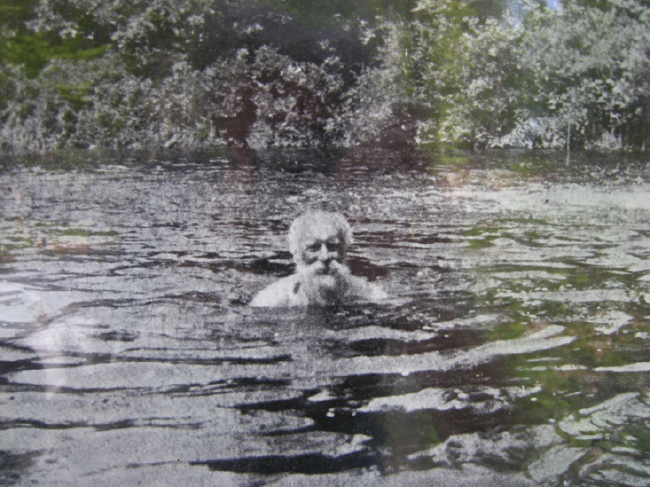
John Burroughs swimming, uncaptioned photo in the information kiosk at the bottom of the road up to Slabsides
Sitting on the shale ridge above Slabsides where the breeze kept the mosquitoes away, watching the silent hermit thrush in the spring trees above me, before I heard the whistle of the train at the West Park crossing and finally the growl of Joan’s car coming up the road, I felt shut off from the vain, blustering, noisy twentyfirst century world by Slabsides’ wooded, precipitous mountain, far removed from its petty cares and turmoils, completely contented in this little corner of the Cosmos.
For related stories see:
- An Afternoon at Slabsides with John o’ the Birds
- Tracking John Muir to the Monkey Puzzle Forests of Chile
- Following John Muir’s Footsteps in the Petrified Forest
- Picknicking in Deep Time
- Travels in Alaska: Seeking the Sublime Among Glaciers and Fjords
- The Art of Ecology: Audubon’s Oystercatchers and Other Examples
- The Art of Ecology: A Pilgrimage to the Heart of the Andes
- At Church with John Muir
Sources and related links:
- “Naturalist John Burroughs’ West Park retreat, Slabsides, continues to serve as a base for inspiration,” from the Daily Freeman newspaper of Kingston, New York, September, 2014
- John Burroughs Association
- John Burroughs 75th Birthday with John Muir
- John Burroughs Journal, 22 June, 1896. Vassar College Digital Library.
- Chronology (Timeline) of the Life and Legacy of John Muir
- John Burroughs and the Place of Nature. 2006. James Perrin Warren.
- List of books by John Burroughs
- History of celery in America
- Cosmos, Alexander von Humboldt
- The Humboldt Current: Nineteenth-Century Exploration and the Roots of American Environmentalism. Aaron Sachs. 2006. Viking.
- The Passage to Cosmos: Alexander von Humboldt and the Shaping of America. Laura Dassow Walls. 2009. University of Chicago Press.
- Signs and Seasons. John Burroughs. 1886. PDF version online
- Leaves of Grass. Walt Whitman. An Electronic Classics Series Publication.
- Whitman: A Study. John Burroughs. 1896. Project Gutenberg Ebook online
- The Invention of Nature: Alexander von Humboldt’s New World . Andrea Wulf. 2015. Alfred A. Knopf.
- Birds and Poets. John Burroughs. 1877. Project Gutenberg Ebook online
- Kosmos, poem by Walt Whitman

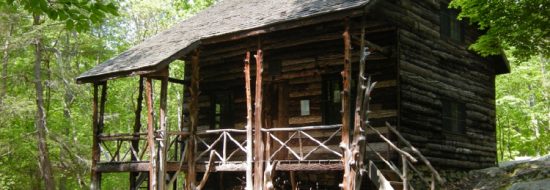
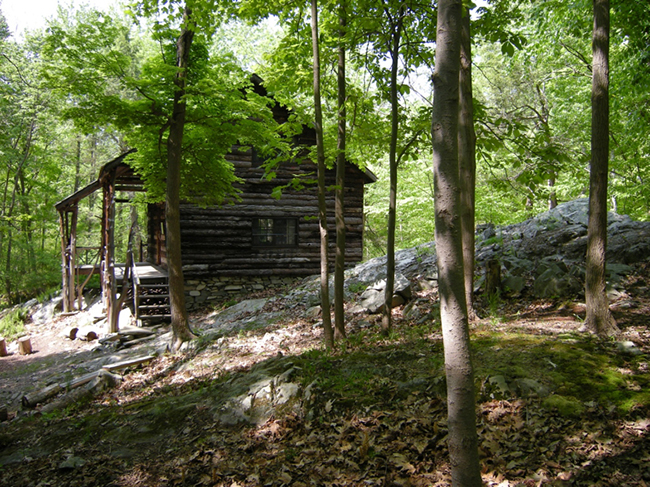
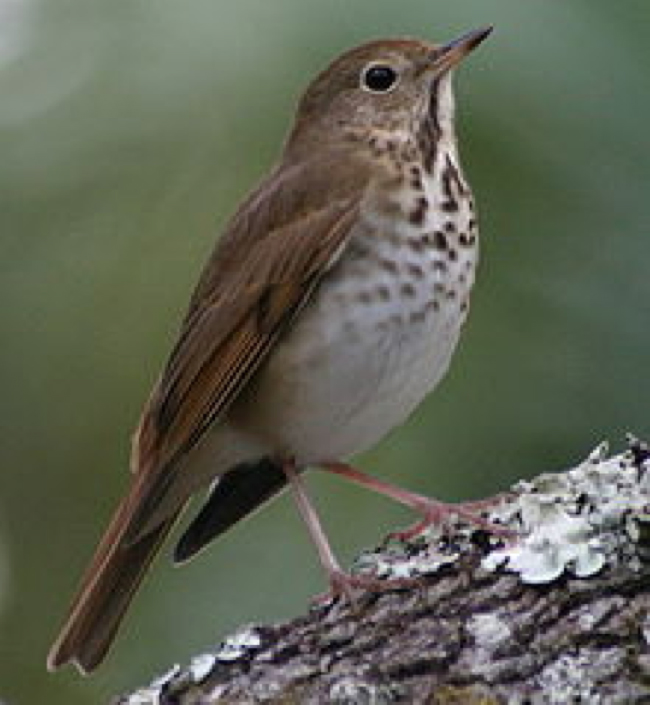
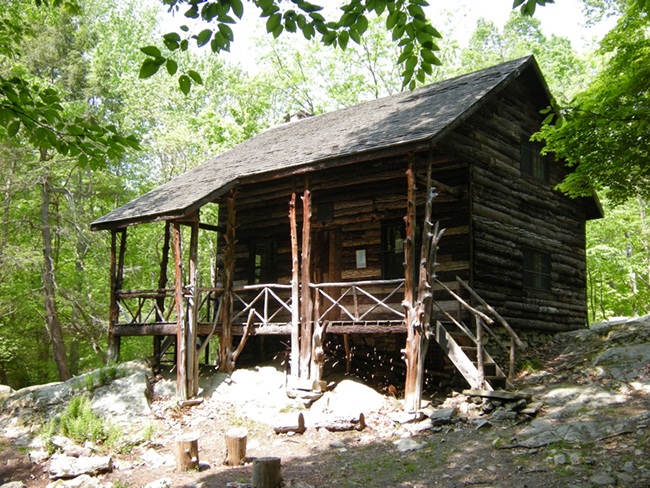
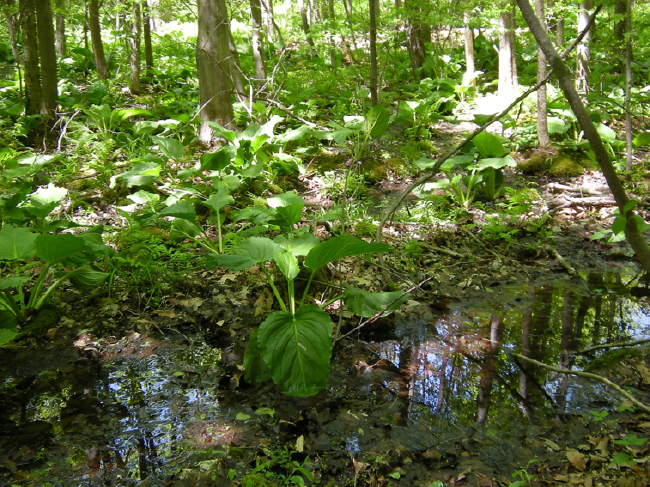




July 4, 2016 5:35 pm
Very nice recap of your second visit to Slabsides and the friendship between Burroughs and Muir. I am embarrassed to say that I don’t know much about Burroughs…even though I am an East Coaster myself (Rhode Island).
Burroughs seemed to have a fondness for slight undercuts while praising Muir: “A very interesting man, a little prolix at times…” and “A unique character – greater as a talker than as writer..”. Did he think of himself a better writer?
The Muir/Burroughs/Whitman trinity is pretty fascinating. I’m guessing that Humboldt, although relevant to their work, was simply old school and more “sciencey” (as that a word?), and Emerson and Thoreau a generation or so before them, and perhaps more political/philosophical.
Who would you point to as 20th century equivalents? Leopold/E.O. Wilson/Edward Abbey?!
Thanks for your blog. I always learn something.
Happy 4th.
July 6, 2016 10:38 pm
I agree that Burroughs deserves to be “not forgotten.” As you say, many of his writings sound very contemporary – especially his enlightened pantheistic views about nature and religion, as represented in his books Accepting the Universe and in The Light of Day.
Excerpts from these books can be found in these three short “essays” taken from these 2 books:
http://www.pantheist.net/god-of-pantheism-by-john-burroughs.html
http://www.pantheist.net/the-scheme-of-the-universe.html
http://www.pantheist.net/devotion-to-truth.html
In this last, he says:
“Men are fast coming to see that devotion to the truth is the essence of true religion, and that the worst form of irreligion is the acceptance of creeds and forms without examining them, or upon the sole authority of some book or sect. The responsibility rests upon ourselves…. So do we make the world in which we live, and it in turn makes us. So does the divine in us keep pace with the divine we see in Nature. So does the beauty of our own characters grow as we see beauty in the character of others. So do our love, faith, hope, charity, develop and augment as we see these things in the world about us.”